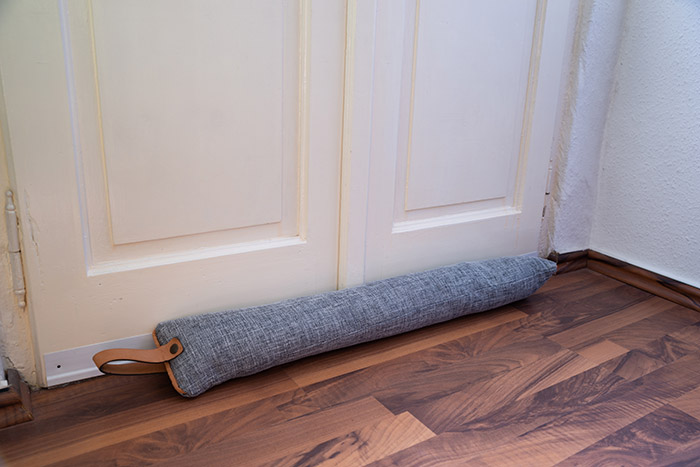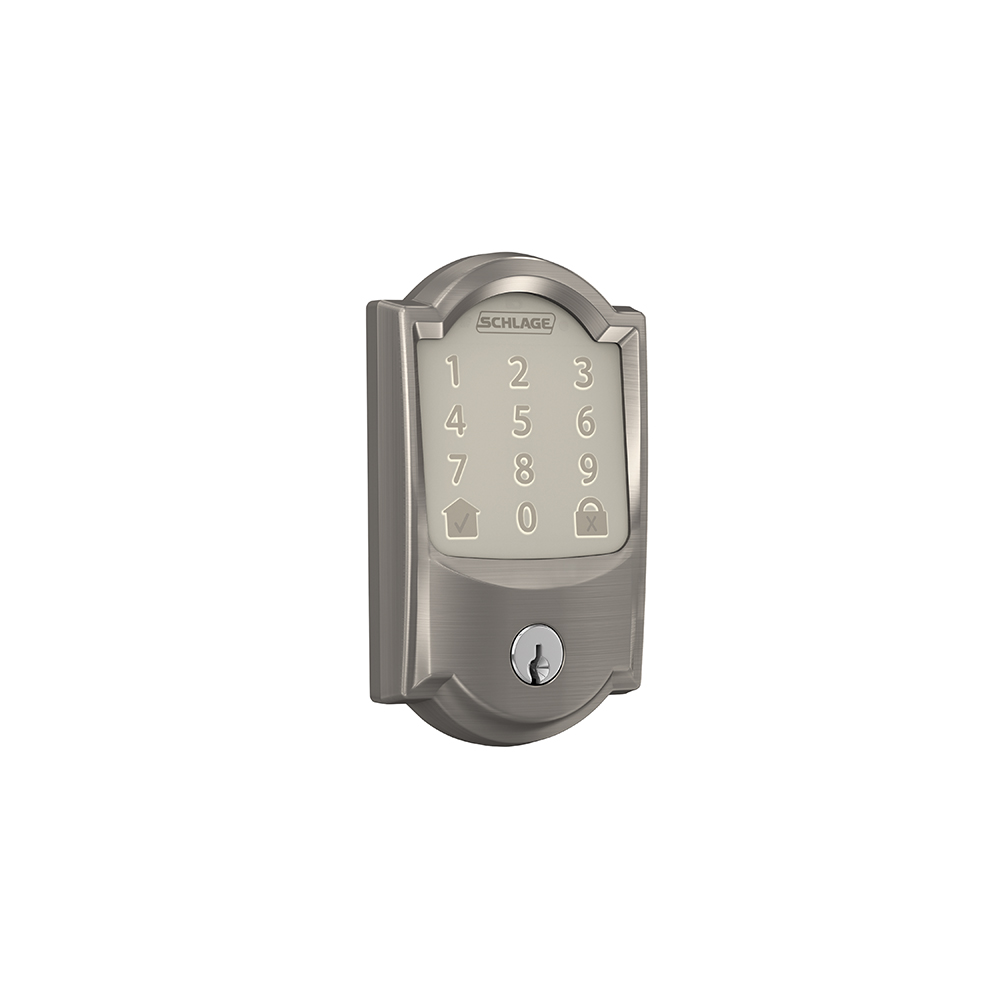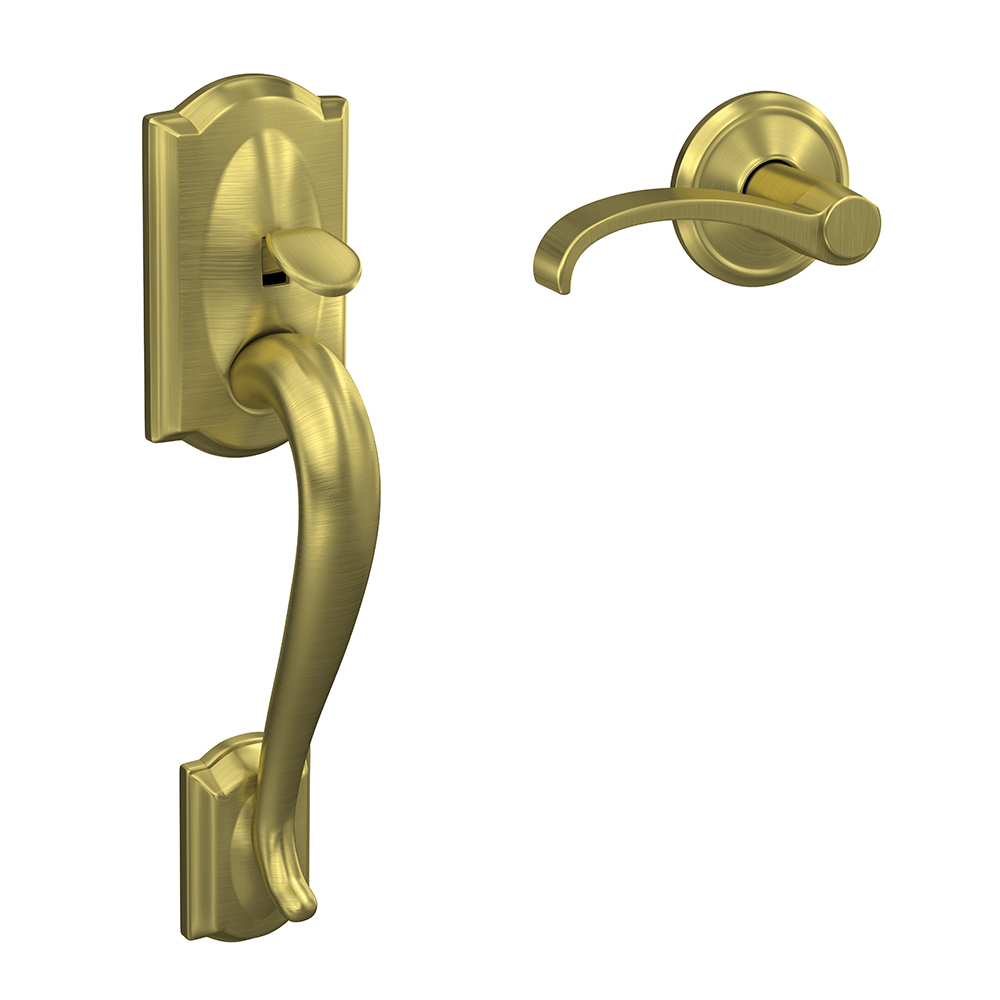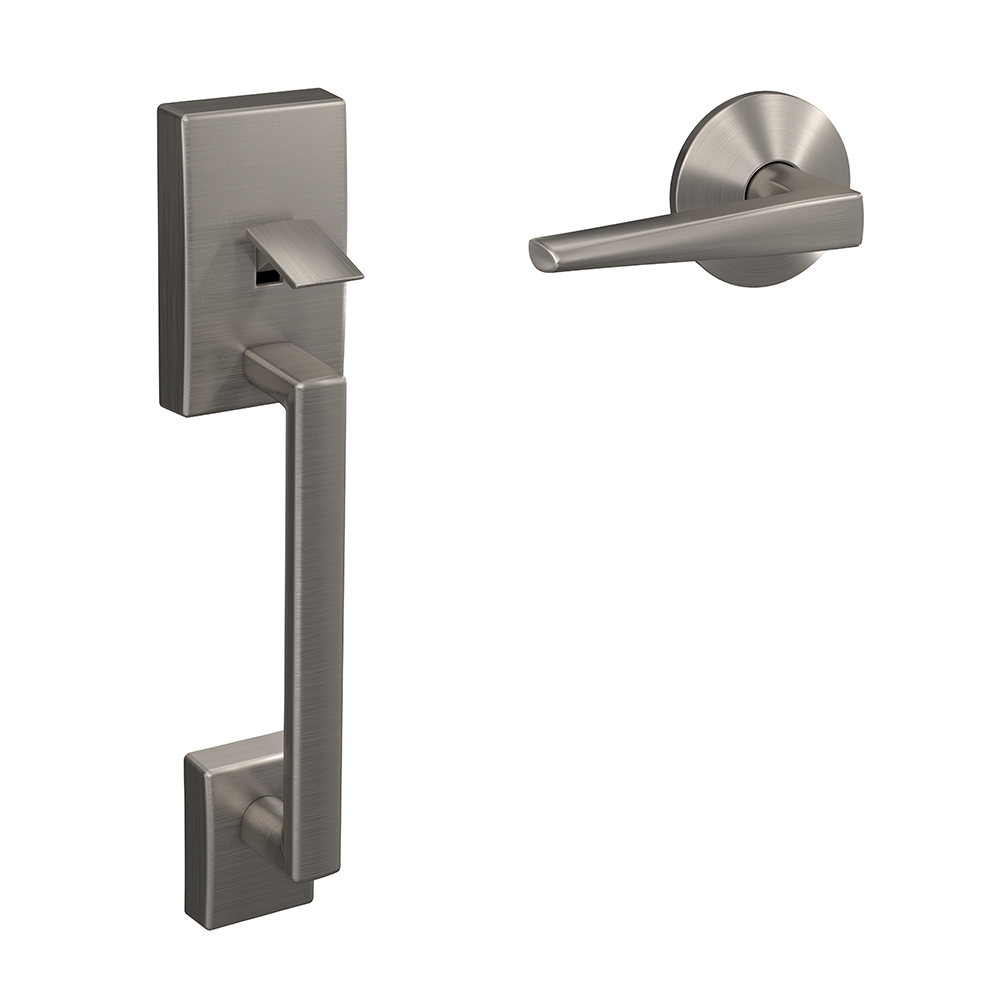How to stop door drafts and better insulate your home
Wednesday, February 15, 2023
Because nearly half of the average family’s energy bill goes toward heating and cooling, Schlage offers you key temperature-control DIYs to improve your home.

How do I find where air is leaking around my doors and windows?
As doors and windows age, or as the weather changes, you might find gaps around the seams that let air in or out. Check two places for leaks in order to stop door drafts. First, look between the wall and the window frame or door frame. One way to do this is by lighting a candle or a stick of incense near the suspected draft. Watch the flame or blow it out and watch the smoke. If the flame flickers or the smoke blows away, you’ve found your leak. To test a door, take a dollar bill or piece of paper and close the door with it underneath. If you can pull the paper out easily, the seal is weak or insufficient. Repeat the test above the door and near the hinges as well.
How do I stop air from coming through my window?
To block window drafts, use caulk around the sash or frame on both the interior and exterior. Only caulk areas that don’t need to move. Second, examine those areas that do need to move, like around a window’s rail and sash. Give the window a little shake. If you hear it rattling around, the seal is not doing its job and keeping out the draft.
To weatherproof windows, use a window insulation kit or insulation film. This film also comes in a kit and can be installed on the window’s interior or exterior. Some people claim bubble wrap is a cheaper alternative to insulate your windows, but we like that the film doesn’t obstruct your views. Apartment Therapy’s guide to installing window insulation film shows how simple this DIY task can be.
How do I stop air from coming through my door?
The first thing to check to stop door drafts is fixing the door alignment. This is also an important factor for improving your security. Once your door is properly aligned, apply weather stripping to block the remaining draft and insulate your door. On the sides and above the door, use foam tape. Underneath the door, you may need to install a door sweep to seal any gaps.
A door sweep is usually a metal strip attached to the bottom of the door with a rubber or bristled strip below that. This second piece is what weatherproofs your door against air, dirt and moisture. Lowe’s offers a handy tutorial and more tips on which kind of weather stripping you might need to best insulate your door.
What should I do to insulate my home?
You can lose a lot of heat in the winter if your home has insulation that’s too thin or of the wrong variety. And it’s not just about insulating the walls. Heat rises, so your attic should be well-insulated to keep the warmth down where you are. Basements and crawl spaces that attract dank and cold should also be inspected for improvement opportunities. You can add insulation to existing walls and spaces with spray foam, so you won’t necessarily need to open up any drywall or make a big mess.
Home Depot has a helpful guide on the types of insulation used in different areas of your home and the recommended rating for your climate.
How to insulate water pipes and water heaters?
Some of your appliances and fixtures might also need an extra layer to protect against freezing – just like when you put on an extra sweater. Not only will insulating water pipes and heaters help them work more efficiently, but it could also keep them from breaking completely. Water pipes especially can freeze and burst, creating more headaches than just a high energy bill. Pipes on an exterior wall are particularly susceptible to freezing or losing heat to cold surrounding air, leading to icy showers. Your water heater faces the same challenges when exposed to cold environments.
To insulate water pipes, you can use traditional foam insulation, which looks a bit like a pool noodle and slides easily onto existing pipes. BobVila.com also recommends spray foam insulation or fiberglass pipe covers, depending on how hot you need the pipes to be and the climate where you live. Insulate your water heater with a water heater blanket or pipe insulation to reduce heat loss by around 25 percent.
Paying attention to these key areas for insulation will help to keep your house warmer in winter and cooler in summer without wasting money and energy. Once you’ve finished weatherproofing doors and windows, find more smart ways to save you and your home energy in our blog. For other DIY and home improvement tips, visit the Schlage blog.














